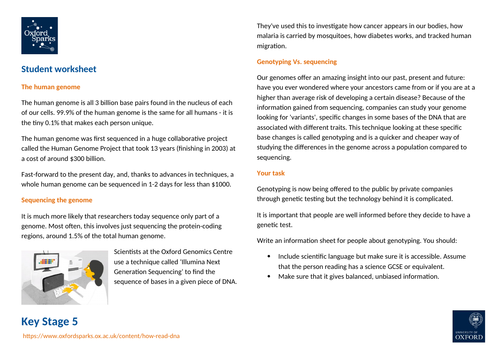




Since the Human Genome Project was completed in 2003, the technology used for genetic sequencing has progressed rapidly. Researchers at the Oxford Genomics Centre have used it to investigate how cancer appears in our bodies, how malaria is carried by mosquitoes and how diabetes works. Private companies are also using new technology to test individual’s genomes for ‘variants’, specific changes in some bases of the DNA that are associated with different traits such as an increased risk of developing heart disease.
In this activity students research into how genetic tests are carried out and what the information from them can be used. They create an information sheet to help people make an informed decision on whether to have a genetic test.
Learning Outcomes:
- Students learn the difference between genome sequencing and genotyping and how they are both used
- Students write an information sheet that contains a balanced, unbiased view of genetic testing
See more at: www.oxfordsparks.ox.ac.uk/content/how-read-dna
Something went wrong, please try again later.
This resource hasn't been reviewed yet
To ensure quality for our reviews, only customers who have downloaded this resource can review it
Report this resourceto let us know if it violates our terms and conditions.
Our customer service team will review your report and will be in touch.